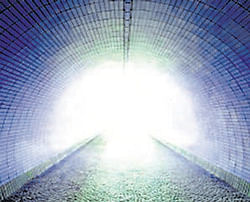
A near-death experience occurs when quantum substances which form the soul leave the nervous system and enter the universe at large, according to a ground-breaking theory proposed by two eminent scientists.
According to this idea, consciousness is a programme for a quantum computer in the brain which can persist in the universe even after death, explaining the perceptions of those who have near-death experiences.
Dr Stuart Hameroff, Professor Emeritus at the Departments of Anesthesiology and Psychology and the Director of the Centre of Consciousness Studies at the University of Arizona, has advanced the quasi-religious theory, the Daily Mail reported.
It is based on a quantum theory of consciousness he and British physicist Sir Roger Penrose have developed which holds that the essence of our soul is contained inside structures called microtubules within brain cells. They have argued that our experience of consciousness is the result of quantum gravity effects in these microtubules, a theory which they dubbed orchestrated objective reduction (Orch-OR).
Thus it is held that our souls are more than the interaction of neurons in the brain. They are in fact constructed from the very fabric of the universe - and may have existed since the beginning of time.
The concept is similar to the Buddhist and Hindu belief that consciousness is an integral part of the universe - and indeed that it is really all there may be, a position similar to Western philosophical idealism, the paper said.
With these beliefs, Hameroff holds that in a near-death experience the microtubules lose their quantum state, but the information within them is not destroyed. Instead it merely leaves the body and returns to the cosmos.
“Let’s say the heart stops beating, the blood stops flowing, the microtubules lose their quantum state. The quantum information within the microtubules is not destroyed, it just distributes and dissipates to the universe at large,” Hameroff said.